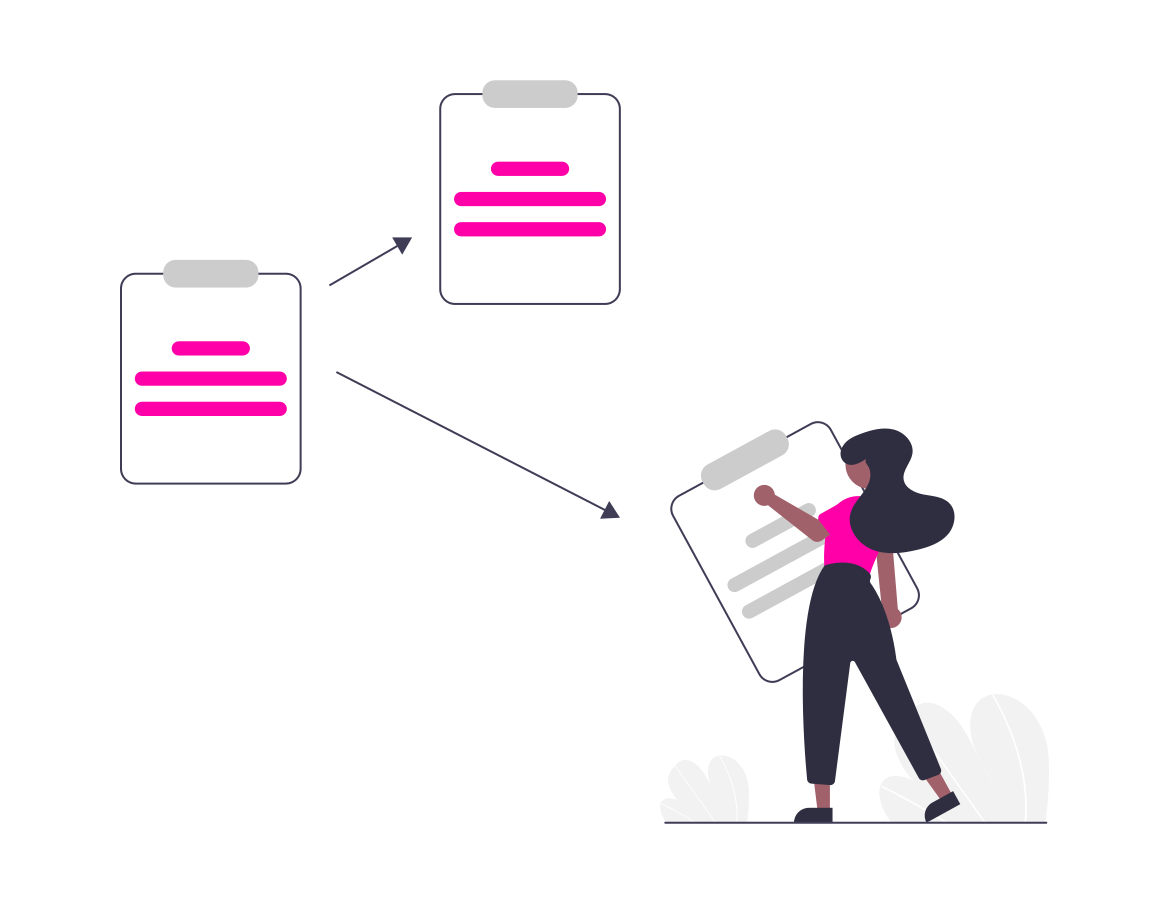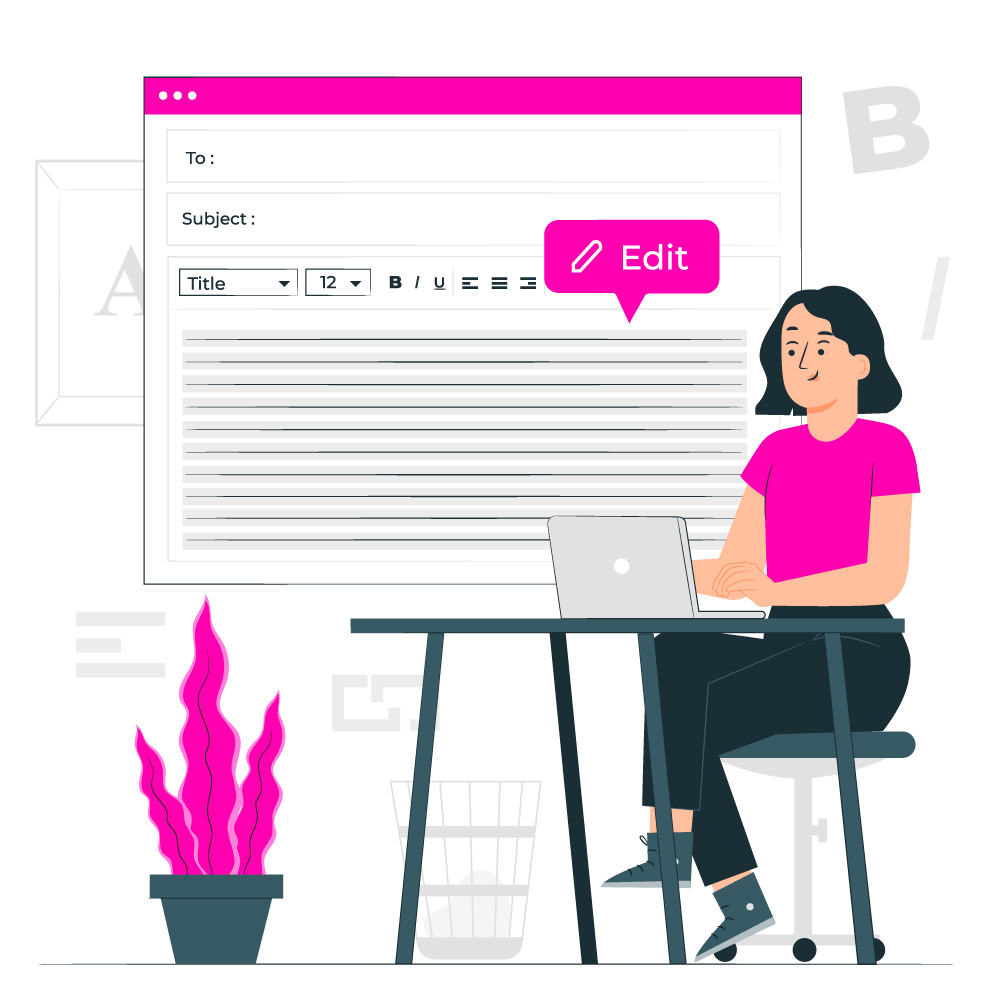Among the various marketing options today, blogging remains one of the most effective methods for attracting website visitors. However, creating compelling blog posts can be a time-consuming task. According to a blogging survey, the typical blog post takes about 4 hours to write, with an average length of 1,416 words. For many, this process can be tiring, especially when considering additional tasks like image selection, SEO content optimization, and publishing.
Fortunately, advancements in artificial intelligence have transformed the blogging field, offering efficient solutions to simplify content generation. AI-powered writing tools now enable writers to produce high-quality blog posts in a fraction of the time it once took! With AI, bloggers can enhance their creativity and engage readers from the very first sentence.
In this guide, we’ll delve into the world of AI writing, exploring its potential to enhance content creation process. We’ll provide steps and practical tips for using AI in your blogging journey. Whether you’re a pro blogger seeking to optimize your workflow or a newcomer eager to explore content creation, this post is your complete guide to utilizing the power of AI in writing amazing blog posts. Let’s read on!
What is AI Writing?
AI writing uses software to create text based on your prompts. You can direct AI writing assistants to write blog posts, articles, or any other type of content. This helps share your or your company’s expertise, advice, or approach on a specific topic. Using this technology can help you generate content quickly, saving you time and money in content marketing.
Even if you prefer writing your content, AI can help brainstorm topics, create outlines, or draft initial content. AI tools use large language models to predict and generate natural-sounding language by analyzing vast amounts of text.
However, AI isn’t perfect. It can make mistakes and often sounds robotic. So, you should always edit AI generated content to add a human touch.
Steps for Writing a Blog Post Using AI
Utilizing the potential of an AI writing tool you can boost your content creation. With the right approach, AI can help you brainstorm, research, and draft blog posts efficiently. In this section, we’ll explore the 6 steps for writing a blog post using AI. Understanding these steps will transform your blogging process, making it faster and easier. So, let’s read on!
Read More: AI-Powered Writing Tools & Generators (Free and Paid)
1. Define Blog Purpose and Audience
Before you start writing, you need to know why you’re writing and who you’re writing for. Ask yourself, “What do I want to achieve with this blog post?” Your goal might be to increase website traffic, educate your readers, or convert high-intent users. Knowing this will shape your content.
Next, consider your audience. Who are they? What are their interests, problems, and needs? Tailor your tone of voice to fit them. For example, a blog aimed at professionals might use a formal tone, while one for adventure enthusiasts could be more casual and exciting.
Your tone of voice should also reflect your brand. If your brand is friendly and approachable, your blog should be too. Examples of tones include friendly, professional, relaxed, adventurous, witty, and empathetic. This consistency with tone helps build a connection with your audience and reinforces your brand identity.

2. Research Your Topic
Once you’ve decided on the blog topic, its purpose, and the audience, the next step is to research more on the topic and find the best keyword. This keyword should be relevant to your content and something your audience is searching for. Keyword research involves brainstorming ideas and using AI tools to find the most effective keywords. Here’s how you can conduct keyword research:
- First, set your goals. Decide if you want to boost traffic, increase product visibility, or cover a specific topic thoroughly. Then, identify seed keywords—broad terms related to your topic. Use these as a foundation to generate more specific keywords using AI tools.
- Analyze the suggestions provided by the AI. Look at key metrics like search volume, user intent, competition, and relevance. Choose keywords that offer a good balance of these metrics and align with your content goals.
- Conduct competitor analysis using AI tools to see which keywords are performing well for them. This can provide insights into potential keywords you might have missed.
- Finally, refine your list of keywords. Focus on those with a good balance of search volume, relevance, and manageable competition.
Use these keywords strategically in your blog post. Place the primary keyword in the title and URL, and sprinkle related keywords naturally throughout your headers and content. Avoid keyword stuffing; instead, integrate them strategically to maintain readability and engagement.
3. Outline Your Blog Post
A well-structured outline helps you stay organized and focused, making the writing process quicker and more efficient. It ensures that your blog covers all necessary points without overlapping topics. Outline starts with a main heading and subheadings for each section. Each section should tackle a distinct idea, with bullet points referencing the support you’ll provide when you write the draft.
AI tools can help you with drafting the best outlines. All you need to do is input your main topic into the AI tool, and it can suggest headings, subheadings, and important points to include. This saves you time and ensures you cover all relevant information.
Remember, your outline is just a guide, not a final product. It doesn’t have to be perfect. The goal is to check if you’ve included everything you want to cover and if the ideas are presented in a logical order. This preparation will help you write a coherent and engaging blog post.

Read More: How To Write A Blog Post Readers Will Love?
4. Start Writing Blog Content
Once you have your outline, start writing your blog content. Aim to write blog post draft quickly, focusing on getting your ideas down without worrying about perfection. Divide your content into an introduction, body, and conclusion.
You can also utilize an AI powered writing assistant to enhance your writing. For this, simply input your headings and key points into the AI blog post generator tool, and it will generate paragraphs for each section of your outline. Combine this AI-generated content with your own creative thoughts to produce the best draft.
Remember, AI may provide a great starting point, but adding your personal touch makes the content unique and engaging.
5. Proofreading the Blog Post
Proofreading is the final check for errors in your blog post. It’s important to catch any spelling, grammar, or punctuation mistakes before publishing. You can use AI-powered grammar checkers to scan your text for errors and improvements.
To proofread using AI, copy your text into the tool and let it analyze your content. It will highlight errors and offer suggestions for corrections. This saves time and ensures your post is polished.
Even with AI, always do a final read-through yourself. This helps catch any errors the AI writing tool might have missed and ensures your blog’s tone and style are consistent.
6. Refine to Add Final Touch
After proofreading, refine your blog post to add the final touches. AI can help improve clarity and quality, but the human touch makes your content resonate with readers and add a spark of human creativity.
Review your blog to make sure the language aligns with your brand’s style and values. Check that your text is easy to read and skimmable, with short paragraphs and clear headings.
Incorporate original storytelling and personal insights to make your content unique and engaging. AI can suggest improvements, but adding your perspective ensures authenticity.
Use the time saved by AI to enhance your post’s quality. Focus on making your content compelling and relevant to your audience. Remember, the goal is to create a blog post that stands out and makes a genuine impact on your readers.
By blending AI efficiency with your personal touch, you can craft a high-quality blog post that truly connects with your audience.
Useful Prompts for AI to Write Blog Posts
AI prompts can greatly assist in writing blog posts, making tasks like brainstorming and outlining easier. These prompts can be detailed and lengthy, but they should include all necessary information in one message to ensure continuity. Ready to learn more? Explore the AI prompts for brainstorming, topic research, blog content, etc. to enhance your blog writing.
1. For Brainstorming Ideas

Come up with ten article ideas for a blog about [Topic]. The audience is [Add target audience details like demographics, interest, etc.]. The ideas should be engaging and modern but still relate to language usage.
2. For Blog Topic Research
Please gather information on relevant keywords, competitor strategies, and SEO optimization best practices for the topic [Topic]. Identify top-ranking keywords, analyze competitor content strategies, and provide guidance on optimizing the blog post for SEO. Also, list potential backlink opportunities and suggest meta descriptions and titles for improved search visibility.
3. For Blog Outlines

You are an expert content writer who creates content outlines. You have a [Add tone] tone of voice and a [add writing style] style. Create a long-form content outline in [preferred language] for the blog post titled [Add title]. The content outline should include relevant and engaging headings and subheadings.
4. For Blog Content
Generate a well-researched and engaging blog post on the topic [Topic]. Incorporate insights from recent studies, relevant statistics, and expert opinions to provide valuable information to our audience [Add audience details]. Ensure the content is structured with a compelling introduction, informative body paragraphs, and a conclusive summary. Aim for a [Add preferred tone] tone and include relevant facts to enhance readability and engagement.
5. For Proofreading Content

Please review the blog post given below for grammar, spelling, and factual accuracy. Pay special attention to tone consistency, clarity of message, and adherence to our brand voice [Add brand details]. Identify and correct any errors or inconsistencies to ensure the content maintains a professional standard. Also, check all citations and references for accuracy and ensure proper attribution. Finally, suggest any improvements to enhance the overall quality and readability of the content.
[ADD BLOG POST HERE]
Read More: 6 Best AI Writing Tools For 2025 (Free & Paid)
Tips For Enhancing AI Writing
AI can help you create content quickly, but it’s important to refine the AI-generated text for quality and accuracy. If you’re confused about where to start, don’t worry—we’re here to share useful tips for enhancing AI writing. These tips will help you improve consistency, maintain your brand voice, and remove bias. Learn these tips to make the most out of your AI writing and produce very engaging content that truly stands out.
1. Edit for Brand Voice and Consistency
AI writing can sometimes sound robotic, even if it’s grammatically correct. To make sure your blog matches your brand’s voice, you need to edit the AI text. Adjust the language so it sounds more like you and fits your usual style.
Don’t settle for AI text that sounds “just fine”; it should be clear and true to your brand. Your content should connect your audience to your brand. This connection helps retain readers and is crucial if you plan to monetize your blog.
2. Review for Fact-Accuracy
Always fact-check any information AI provides to ensure it’s correct as AI can sometimes generate content with inaccurate or made-up facts. You must validate all statements, links, and references to avoid spreading false information.
This might require additional research to verify or update the information. Careful fact-checking ensures your content is reliable and trustworthy, which is essential for maintaining your credibility and audience trust.
3. Remove Bias and Stereotypes
When editing AI-generated content, be mindful of potential biases or stereotypes. AI tools learn from vast amounts of data, which can include unfair information and assumptions. Carefully review your content to ensure it’s fair and inclusive. Replace any biased language with neutral, respectful terms.
Ensure your content respects diversity and represents various perspectives accurately. This not only makes your blog more ethical but also more relevant to a wider audience. Removing bias helps in creating a more welcoming and inclusive environment for all your readers.
4. Incorporate Visuals and Media
Enhance your blog by adding visuals and media. Use images, infographics, videos, and charts to break up text and make your content more engaging. Visuals help explain complex ideas and keep readers interested. Ensure that your media is relevant and high-quality.
Integrating visuals not only improves the reader’s experience but also makes your blog more shareable and attractive. Remember, well-placed visuals can significantly boost the impact of your content and keep your audience engaged.

5. Optimize for SEO and Readability
To optimize your content for SEO, use keywords naturally throughout your blog post, especially in the title and subheadings. Structure your content to be easy to follow, with short paragraphs, bullet points, and summaries.
This helps readers quickly find the needed information and improves your search engine ranking. Avoid thin content by providing detailed, valuable information that fully answers your readers’ questions. Optimizing your blog for SEO and readability ensures it’s accessible, engaging, and easy to find online.
Read More: From Blank Page to Compelling Copy –The Art
6. Gather Feedback for Continuous Improvement
Seek feedback to improve your AI-generated content continuously. Share your blog post with colleagues, friends, or a small group of readers to get their opinions. Ask them to highlight areas that are unclear, unengaging, or off-brand. Their insights can help you identify weaknesses and areas for improvement.
Use the feedback to refine your content and make it better. This process helps you understand how your audience perceives your writing and what adjustments are needed to enhance its effectiveness. Regularly incorporating feedback ensures your blog remains relevant, engaging, and aligned with your audience’s expectations.
Conclusion
We’ve come to the end of our discussion on using AI to write blog posts. You’ve learned a lot about AI writing, the steps for writing a blog post using AI, useful AI prompts for blog posts, and six tips to enhance AI writing.
Remember, while AI can help you write faster and more efficiently, it’s important to edit your content to ensure clarity, accuracy, and consistency. This combination of AI efficiency and your creativity will produce the best results. Now it’s your turn to put this knowledge into action and let AI boost your blogging efforts. AI + You = Blog Magic!
Further Reads :
9 Essential Writing Tips Every Writer Must Use!
15 Best Presentation Blogs and Websites to Follow!
Company Wiki vs Blog: What are the Differences & the Similarities?
100+ Power Words To Make You Stand Out From Competition!


